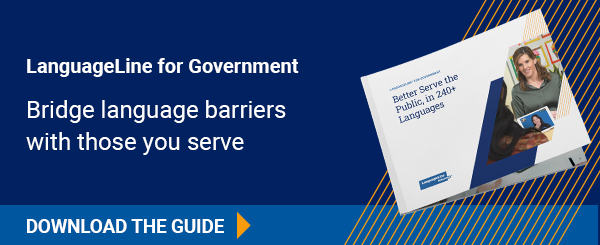
As we brace ourselves for the impending severe weather conditions that lie ahead, one crucial aspect that demands our attention is effective communication. During times of crisis, accurate and timely information becomes paramount. However, ensuring that vital information reaches everyone in the community can be a challenge, especially when language barriers exist.
In such circumstances, interpretation and translation services play a pivotal role in keeping everyone informed, safe, and connected. In this blog post, we will explore the importance of providing critical information in the languages most frequently spoken within a community. Bridging these linguistic gaps promotes inclusivity and saves lives.
Breaking Language Barriers to Ensure Safety: Severe weather events, such as hurricanes, floods, or wildfires, often require prompt evacuation or immediate action. In diverse communities, language barriers can lead to confusion and potentially dire consequences. By providing interpretation and translation services, emergency management agencies can reach a wider audience and ensure that essential information is conveyed accurately.
Promoting Inclusivity and Reducing Vulnerability: Language barriers disproportionately affect vulnerable populations, including non-English speakers, immigrants, and refugees. These individuals may already face socioeconomic challenges, making them more susceptible to the adverse effects of severe weather events. By offering interpretation and translation services, local authorities empower these communities, granting them equal access to vital information.
Enhancing Community Engagement and Trust: Clear and accessible communication builds trust between authorities, service providers, and the public. When they provide quality language assistance, emergency management agencies demonstrate their commitment to inclusivity and foster positive relationships within diverse communities.
Mitigating Misinformation and Rumors: In the absence of accurate information in their native language, non-English speakers may turn to unreliable sources or rely on second-hand information, leading to misinformation and rumors. These false narratives can exacerbate fear, panic, and confusion during severe weather events. Language access ensures that everyone receives consistent updates, reducing the spread of misinformation and promoting a unified response to the crisis.
Strengthening Emergency Response and Preparedness: Effective emergency response relies on timely and efficient communication. During severe weather events, interpretation and translation services are indispensable for coordinating evacuations, disseminating safety protocols, and conveying information regarding shelters, medical services, and relief efforts.
READ: What the ‘Man in the Yellow Shirt’ Taught Local Governments About Communication

LanguageLine Can Help
During severe weather emergencies, LanguageLine Solutions stands as a reliable partner, offering a comprehensive suite of services that enable effective communication and ensure the safety of diverse communities.
Interpretation in Multiple Formats: We offer interpretation services in various modes, including over-the-phone, video, and in-person interpretation. This support is available in more than 240 languages. This versatility allows emergency responders to choose the most suitable format for different situations. For example, in-person or video interpretation can be particularly valuable for interpretation of American Sign Language.
On-Demand Interpretation: Our 23,000 professional interpreters are available 24-7, enabling real-time communication between non-English speakers and emergency personnel. Whether it's emergency hotline calls, public announcements, or complex interactions, interpreters facilitate clear and accurate communication.
Mobile Interpretation: The LanguageLine app is invaluable during severe weather emergencies, offering immediate access to professional interpreters via a smartphone or tablet. This mobile solution enables emergency responders to communicate effectively with non-English speakers in real-time, even in challenging and fast-paced situations. Video and audio-only interpretation are both available.
Translation of Written Materials: We help translate important written materials, such as press releases, evacuation instructions, safety guidelines, and informational brochures, into multiple languages. This ensures that non-English speakers have access to vital information, enhancing their understanding of evacuation procedures, emergency shelters, medical services, and available resources. Translated materials are available in 290 languages and create awareness about where to go for news and further information.
For more than 40 years, LanguageLine has been providing language assistance to emergency services. This includes on-demand interpretation, OnSite interpretation, and translation during severe weather events. Let's have a conversation about the innovation we can lend to the unique challenges within your community. Please contact us and we’ll respond urgently with a free consultation.





